US initial jobless claims dropped -8k to 207k in the week ended September 29, slightly expectation of 206k. Four-week moving average of initial claims rose 0.5k to 207k. Continuing claims dropped -13k to 1.65m in the week ended September 22. Four-week moving average of continuing claims dropped -15.25k to 1.6645m, lowest since October 27, 1973.
Into US session: Sterling strongest on Brexit progress, Aussie and Kiwi weakest
Entering into US session, Australian and New Zealand Dollar remain the weakest one for today. But it’s followed by Dollar as the third weakest. On the other hand, Sterling and Yen are the strongest ones, followed by Euro. The Pound is apparently lifted by news that news that UK is making progress on Brexit and the supposed new Irish border proposals is a “step in the right direction”. But so far no detail is leaked, and thus, the gain is limited in Sterling too. Yen is, on the hand, boosted by both risk aversion and strong rally in 10 year JGB yield.
Overall, we’d like to emphasize that USD/CHF and USD/JPY are merely in tight range and Dollar digests yesterday’s strong rally. But EUR/USD and GBP/USD strengthen today, they’re in nothing more than a corrective recovery. Over the week, Canadian and Dollar are still the two strongest ones.
Stocks markets are generally in risk aversion today. AT the time of writing, DAX is down -0.07%, which is rather resilient. But CAC is down -0.95% and FTSE is down -0.91%. In Asia, Nikkei closed down -0.56%, Hong Kong HSI down -1.73%, Singapore Strait Times down -1.1%. China is still on holiday. US futures point to slightly lower open.
Global treasury yields follow US higher today. German 10 year bund yield is currently up 0.0567 at 0.534. UK 10 year gilt yield is up 0.074 at 1.517. Also, Japan 10 year JGB yield is up 0.0178 at 0.159. US 10 year yield took out key resistance at 3.115 yesterday with strong momentum. We might see the rally continues today.
IMF: Japan needs reinvigorated policies for reflation, growth and sustainable debt path
IMF said in a report that while Japanese economy continues to “grow above potential”, downside risks have increased. It urged that “reinvigorated policies are needed to reflate the economy, boost potential growth, and put public debt on a sustainable path.” And, coordinated effort should include (i) a well-specified medium-term fiscal framework; (ii) an ambitious effort toward labor, product market, and corporate reforms; and (iii) a continued accommodative monetary policy accompanied by clear forward guidance.
On monetary policy, IMF hailed that “BoJ’s recent emphasis on making the accommodative stance more sustainable is appropriate, and complements its shift to a more patient approach to reaching the inflation target.” However, IMF suggested that “the relationship between the forward guidance on the long-term interest rate target and the inflation target could be clarified and the quantitative guidance on JGB purchases could be removed.” Also, it suggested BoJ to publish staff baseline forecasts together with underlying policy assumptions to strengthen market communications.
On trade, IMF emphasized that “Continued advancement of multilateralism and bolder domestic policies are needed to mitigate inward spillovers, including from potential trade-war escalation.” Though, Japan’s leadership in furthering multilateralism can help mitigate the possible effects of trade-war escalation.
ECB Rehn: Market expectations on first hike consistent with ECB statements
ECB Governing Council member Olli Rehn said “financial market expectations concerning the timing of the first interest rate rise are consistent with the Governing Council’s statements.” That is, ECB said in forward guidance that interest rates will remain at present levels at least through summer of 2019.
Meanwhile, he also added that “the need for extended forward guidance on monetary policy will also diminish, once inflation has reached sufficient progress towards the price stability objective.”
Regarding a hot recent topic of Italy, Rehn said ECB’s Governing Council “primarily looks at the development of the whole euro zone, and firstly from the mid-term price stability target point of view”. And, “monetary policy will be done based on that, not looking at just one member state but the whole euro zone.”
Global treasury yields follow US higher, Australia lags in momentum
Global treasury yields follow the strong rally in US today. Japan 10 year JGB yield rises 0.0214 to 0.162. Let’s remember that BoJ “allows” it to fluctuate between -0.1% and 0.1%. It’s now way above the top of the band.
German 10 year bund yield is currently up 0.065 at 0.542, back above 0.5 handle. There was a blip earlier this week on Italian budget concerns. But it seems that the new budget deficit targets are relatively well received. There is prospect of heading towards 0.6% handle even though it’s still bit far.
Australia 10 year yield also rises 0.067 to 2.718. But judging from the chart, momentum is relatively weaker than the others. That could explain the sluggishness of Aussie.
World Bank downgrades East Asia and Pacific growth forecasts
The World Bank downgraded East Asia and Pacific growth forecast in 2018 from 6.6% to 6.3%. It also projected growth to further slow to 6.0% in 2019, down graded from 6.1%. For China, growth is projected to slow to 6.5% in 2018, unrevised. But China’s growth projection in 2019 was revised lower from 6.3% to 6.2%.
Sudhir Shetty, World Bank chief economist for East Asia and Pacific region, noted that “the main risks to continued robust growth include an escalation in protectionism, heightened financial market turbulence, and their interaction with domestic fiscal and financial vulnerabilities”.
And, he added, “in this context of rising risks, developing EAP economies need to utilize the full range of available macroeconomic, prudential, and structural policies to smooth external shocks and raise potential growth rates.”
Powell led a chorus of hawkish Fedspeaks
Fed Chair Jerome Powell repeated his upbeat comments today. He said the US is experiencing “a remarkably positive set of economic circumstances, and we’re working hard to try to sustain the expansion and keep unemployment low and keep inflation right on target”. And, “there’s really no reason to think that this cycle can’t continue for quite some time.” On interest rates, he said they are “still accommodative” and “we’re gradually moving to a place where they’ll be neutral.” He added that “we may go past neutral. But we’re a long way from neutral at this point, probably.”
Other comments from Fed officials were generally hawkish. Chicago Fed President Charles Evans said “getting policy up to a slightly restrictive setting — 3, 3.25 percent — would be consistent with the strong economy and good inflation that we are looking at.”
Philadelphia Fed President Patrick Harker said he preferred Fed’s rate hike schedule to avoid inverting the yield curve and “it’s just a question of timing”. He added there is no need to “rush the normalization process”. For now his forecasts are “”three this year, two next year, two year after.”
Cleveland Fed President Loretta Mester said she supported a gradual pace of hiking. But she also noted that “if we end up having inflation move high up” or if it goes too much above target, “then we need to move policy faster.”
Richmond Fed President Tom Barkin said “growth is solid, unemployment is low, and inflation is at target”. He didn’t touch directly on monetary policy but struck a tone of caution on flattening yield curve which “could suggest markets are losing confidence in the outlook.”
Italy PM Conte hailed budget respected commitments, it’s courageous and serious
Italian Prime Minister Giuseppe Conte confirmed the budget deficits plan after meeting of ministers yesterday. The deficit targets are now 2.4% of GDP in 2019, 2.1% in 2020 and 1.8% in 2021. Conte predicted debt-to-GDP ratio to fall slightly from the current 131% to 130% in 2019, and then drop further to 126.5% by 2021.
Conte hailed the budget as “respected commitments, it is courageous and serious”. And he added “we will show courage above all in 2019, because we believe that our country needs a budget that calls for strong growth”.
Economy Minister Giovanni Tria said there would be additional investments of 0.2% in 2019, 0.3% in 2020, and 0.4% in 2021. And, he added “this describes the quality of the budget: we’re aiming to have public investments as principal instrument to work on growth”.
Mid-US update: 10-year and 30-year yields break significant resistance, DOW hit records, Dollar strong
The strong rally in US treasury yields, followed record ISM non-manufacturing composite data, is the key development in US session today. At the time of writing. 30-year yield is up 0.80 % at 3.287, 10-yearyield up 0.075 at 3.131, 5-year yield up 0.065 at 3.009. Again, yield is stronger at the long end.
10 year yield (TNX) break of 3.115 resistance indicates resumption of medium term up trend from 1.336 (2016 low). More importantly, we’re now seeing the chance of firm break of multi-decade trend line resistance, which will be a very bullish signal.
30 year yield (TYX) also breaks key resistance level at 3.255/60. Medium term rise from 2.102 (2016 low) is resuming and could possibly target next key resistance at 3.976. At the same time, TYX could also be heading for a break of multi decade trend line resistance too.
It would take some more time to confirm the underlying bullish momentum in both TNX and TYX. That’s nevertheless very significant development if realized as mentioned above.
Of course, DOW’s record run is also worth a mention as it hit new record high at 26951.81. DOW is currently up 0.58% at 26927. S&P is up 0.38% and is not far from another record. NASDAQ lags behind but it’s still up 0.49%.
In the currency markets, Sterling remains the strongest one for today as somehow no news is good news. At least, there is no drama from PM May’s speech at the Conservatives conference. But the pound could easily be overtaken by Dollar should it’s consolidation finish. Canadian Dollar is the third strongest one for now. Australian and New Zealand Dollar are the weakest while Yen is the third. Monetary policy divergence plays a key role in the movements.
ISM non-manufacturing jumped to 61.6, all time high since 2008
ISM non-manufacturing composite rose to 61.6 in September, up from 58.5 and beat expectation of 58.3. That’s also an all-time high since inception of the composite index in 2008. Employment index jumped notably by 5.7 to 62.4. ISM also noted in the release that “17 non-manufacturing industries reported growth” and, “respondents remain positive about business conditions and the current and future economy.”
EU Moscovici: Italy’s budget revision is a good signal
European Commissioner Pierre Moscovici said it’s a “good signal” that Italy’s budget trajectory has been revised “because it shows that the Italian authorities are hearing the concerns and remarks from their partners and the European Commission.” However, he also warned that “If it is 2.4 percent, it’s possible that the structural deficit will not be within the bounds of the (EU) stability and growth pact”.
On the other hand, Italian Economy Minister Giovanni Trial said “even with a deficit goal that takes us further away from the structural adjustment requested by Europe, it doesn’t seem to me that it can be said this government is carefree on spending or that it’s going to blow apart public accounts to keep promises.”
Into US session: Dollar gains as ADP job beat expectation, Aussie and Kiwi weakest
Entering into US session, Dollar trades notably higher after ADP employment beat expectations and showed 230k growth in September. Sterling is the strongest one so far, but is vulnerable to another selloff. Euro’s recovery has already lost steam. The news that Italy would lower budget deficit target slightly after 2019 just received mildly positive reactions by the markets. On the other hand, Australian and New Zealand Dollar are trading as the weakest ones for today, followed by Swiss Franc and Yen.
In other markets, DAX is on holiday today. CAC is trading up 0.67% while FTSE is up 0.60% at the time of writing. German 10 year bund yield trades up 0.031 at 0.456. Italian 10 year yield trades down -0.11 at 3.334. German-Italian spread narrows today but remains huge.
Earlier today, Nikkei closed down -0.66%< Hong Kong HSI down -0.13%. But Singapore Strait Times gained 0.76%. One development to note is that Japan 10 year JGB yield added another 0.0126 to close at 0.142. It’s now notably outside BoJ’s band of -0.1% to 0.1%.
Fed Evans: A slightly restrictive policy could keep extremely well economy going
Chicago Fed President Charles Evans said the US economy is doing “extremely well”, the “fundamentals are strong, the labor market is doing terrific.” He added that “I spent quite a long time indicating that I think inflation needs to get up to 2 percent, and here we are.” Evans also noted “by setting the policy rate just a little above neutral, that will continue to keep things going for quite some time” referring to the “very well” state the economy is in.
Though, he also indicated that “Long-term inflation expectations are now, in my opinion, a little bit too low.” Therefore, ” we don’t have to raise the funds rate as restrictively as we may have in the past.”. And, “if the outlook continues to be as good as it is, at a slightly restrictive level and then hold there for quite some time until we begin to see signs that we need to make an adjustment.”
Italy EM Tria: Gradual reduction in deficit after 2019
Italy Economy Minister Giovanni Tria said today that the while the budget deficit will increased compared with previous forecast in 2019, “there will be a gradual reduction in the following years”. His comments echo reports that the populist government has revised their original plan after strong pressure from the EU.
Originally, the plan was to have budget deficit target at 2.4% of GDP in the three years from 2019. But according to unnamed government sources, the plan now is to keep 2.4% in 2019, but lower to 2.2% in 2020 and then 2% in 2021.
Prime Minister Giuseppe Conte is due to meet with key ministers today. The details could then be defined after the meeting.
UK PMI services dropped to 53.9, Brexit worries continue to dominate the outlook
UK PMI services dropped to 53.9 in September, down from 54.3 and matched expectations. The key points are “growth of business activity eases only slightly since August”, “job creation edges up to seven-month high”, “higher fuel prices lead to sharp rise in input costs”.
Chris Williamson, Chief Business Economist at IHS Markit, which compiles the survey:
“The service sector continued to report solid steady business growth in September which, alongside news of sustained expansions in both manufacturing and construction, suggests the UK economy expanded by just under 0.4% in the third quarter.
“The data therefore add to signs that the economy has enjoyed robust growth since the rocky start to the year, when extreme weather disrupted business.
“Brexit worries continue to dominate the outlook, however, keeping business optimism firmly anchored at levels which would normally be indicative of an imminent slowdown. Clarity on Brexit arrangements is therefore needed as soon as possible to help sustain growth.
“In a month during which oil prices spiked higher, it was no surprise to see cost pressures intensify, meaning consumer price inflation will have likely continued to run at a pace above the Bank of England’s 2% target in September, and will likely remain closer to 3% than 2% in coming months.
“The steady economic expansion and intensification of cost pressures will add to views that the next move in interest rates will be another hike. However, with Brexit uncertainty intensifying in recent weeks, any rise seems unlikely prior to the scheduled March 29th exit from the EU.”
Eurozone PMI services finalized at 54.7, points to 0.5% Q3 GDP growth
Eurozone PMI services was finalized at 54.7 in September, unrevised, up from August’s 54.4. PMI composite was finalized at 54.1, down from August’s 54.4.
Among the countries, German PMI services hit 2-month low at 55.0. France PMI services dropped to 21-month low at 54.0. Spain PMI services dropped to 58-month low t 52.5. But Italy PMI services improved slightly to 2-month high at 52.4.
Chris Williamson, Chief Business Economist at IHS Markit said:
“Context is everything: although running close to a two-year low, the disappointing September PMI remains at a relatively elevated level and signals solid growth. Comparisons with official data indicate that the survey data are equivalent to GDP rising by almost 0.5% in the third quarter.
“Note that the PMI data also indicate that we can expect the official growth estimates for the first half of the year to eventually be revised higher.
“However, the fourth quarter is unlikely to see such robust growth, as recent months have seen a clear loss of momentum in terms of both output and new order gains.
“The most worrying signs come from exports. Trade flows have more or less stalled, which represents a marked contrast to the record rate of export growth seen at the end of last year. While service sector growth remained resilient in September, it would be unusual for this to be sustained in the absence of improved manufacturing growth.
“Similarly, while employment gains remained historically high, a steady erosion in the rate of order book growth so far this year suggest the appetite to hire will soon wane without any notable upturn in new order inflows.
“With business confidence about the outlook running at one of the lowest seen over the past two years, companies are clearly not expecting any such imminent turn-around in demand.”
Euro recovers as Italy may tame their budget deficit target after 2019
Euro recovers broadly today on news that the detailed version of Italy’s budget is not as bad as it’s initially reported. 5-Star Movement leader Luigi Di Maio has made himself clear that the coalition government is “not not turning back from the 2.4 percent target” referring top budget deficit in terms of GDP. However, it’s reported the coalition has tweaked to plan to cut percentage down the road.
The final version could be budget deficit at 2.4% of GDP in 2019, then 2.2% in 2020 and 2.0% in 2021. That would be, at least gesturally, better than the reported plan of 2.4% through the next three years. Though, firstly, whether the eurosceptic coalition would do it is in question. And, whether EU would accept it is another question.
Di Maio has indicated that some details on the so-called Economic and Financial Document would be defined on Wednesday morning. So we’d expect volatility in Euro to continue.
Fed Powell: Remarkably positive economic outlook to continue
Fed Chair Jerome Powell said in a speech yesterday there’s a “remarkably positive outlook” in the economy. And the forecasts are “not too good to be true”. The US is now in favorable condition with unemployment rate at near 20-year low at 3.9%. And Inflation is running near Fed’s target of 2%. A wide range of data and prices also supports a positive view while these favorable conditions are forecast to continue.
Powell added that the ” historically rare pairing of steady, low inflation and very low unemployment is testament to the fact that we remain in extraordinary times”. And, Fed’s policy of “gradual interest rate normalization” showed the effort to balance the risks to extend the expansion, maintain maximum employment, low and stable inflation.
Fed Kaplan not advocating a pause after interest rate hits neutral
Dallas Fed President Robert Kaplan said he’s based case is for Fed hike once more this year and twice next year. And he added that “mathematically there’s at least a couple more increases” to get to his neutral rate of 2.50-2.75%. He also noted that he “not advocating a pause” from there. But rather, he’ll “make that judgment as we go; I haven’t decided yet.”
Additionally he reiterated his view that GDP will grow 3% this year and slow to 2.5% next as impact of fiscal stimulus fades. Also, he warned that the tailwind from debt-funded stimulus could turn into a headwind in the out years.




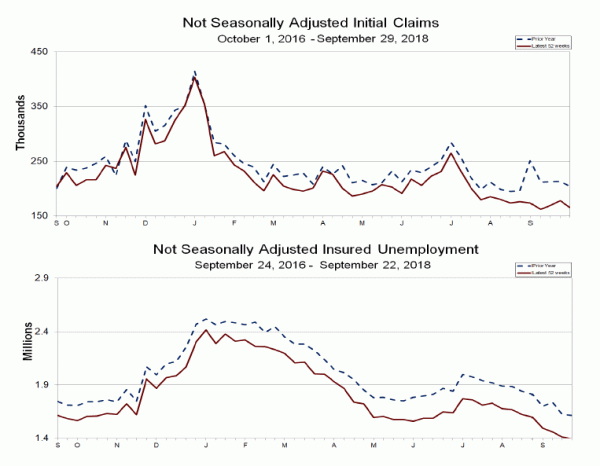
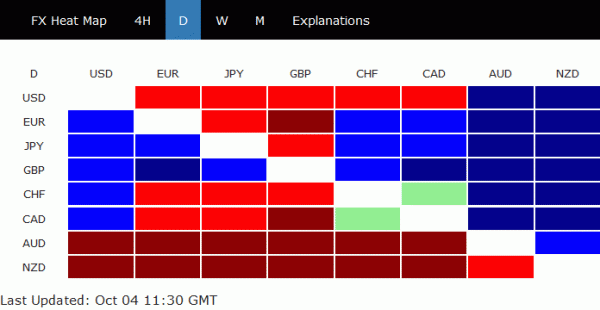
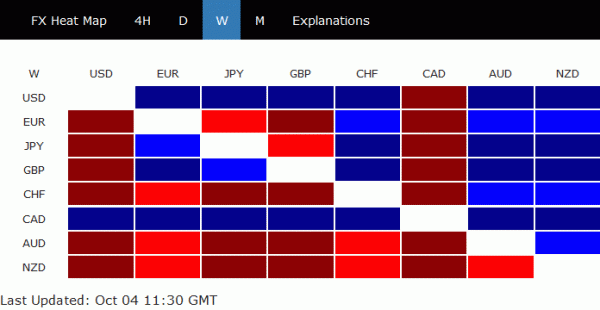
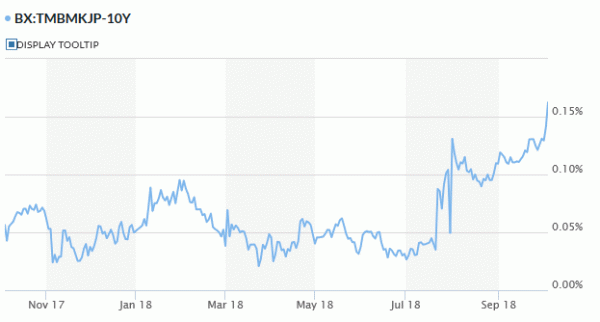
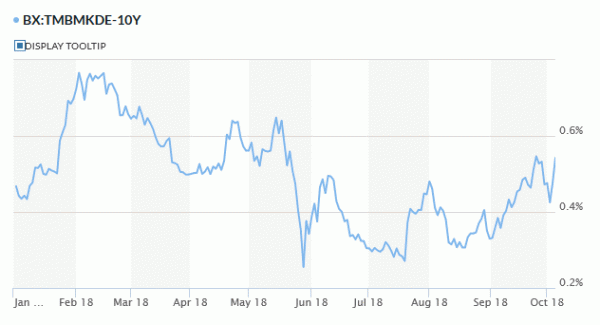
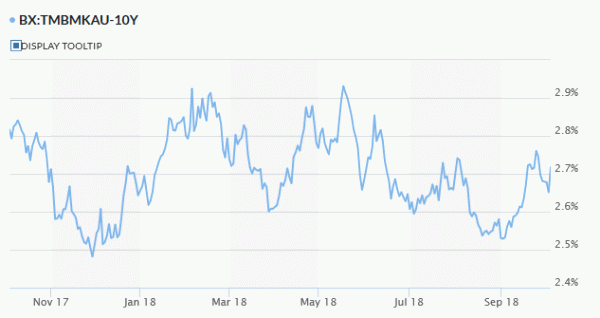
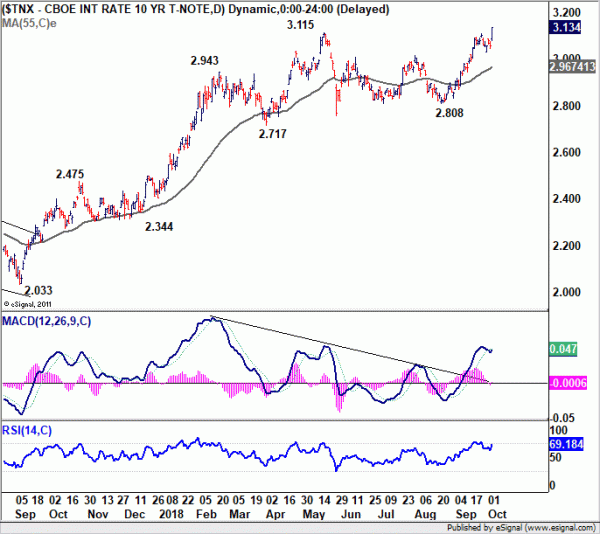
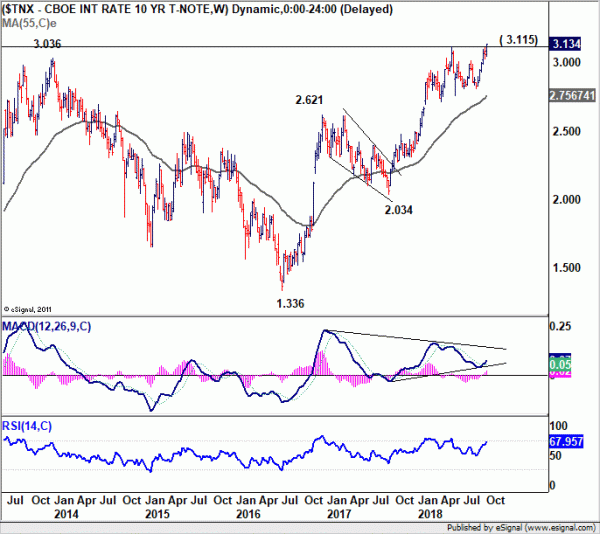
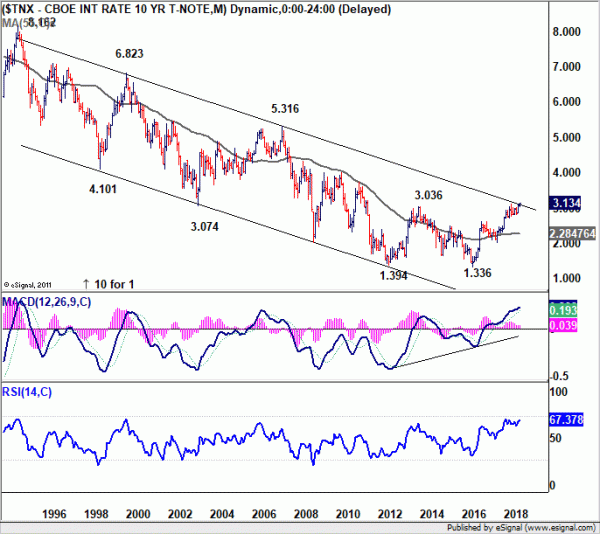
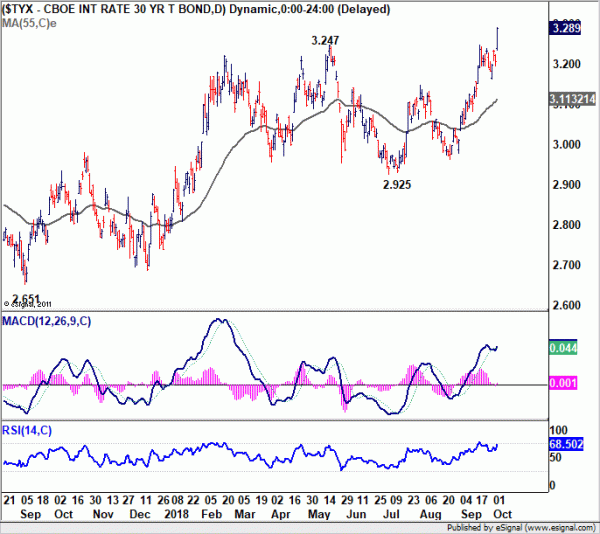
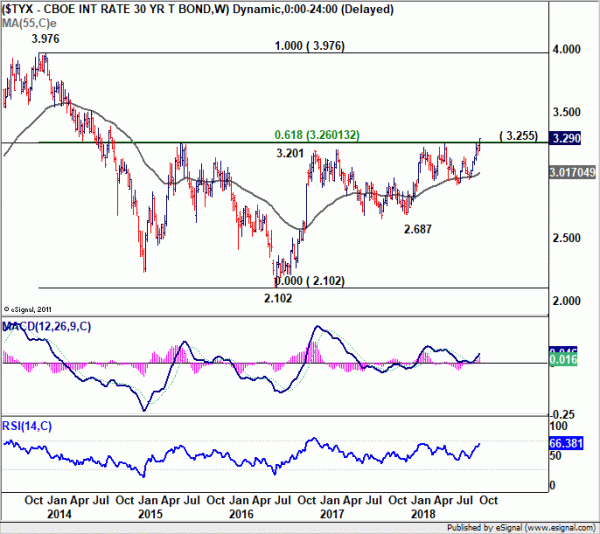
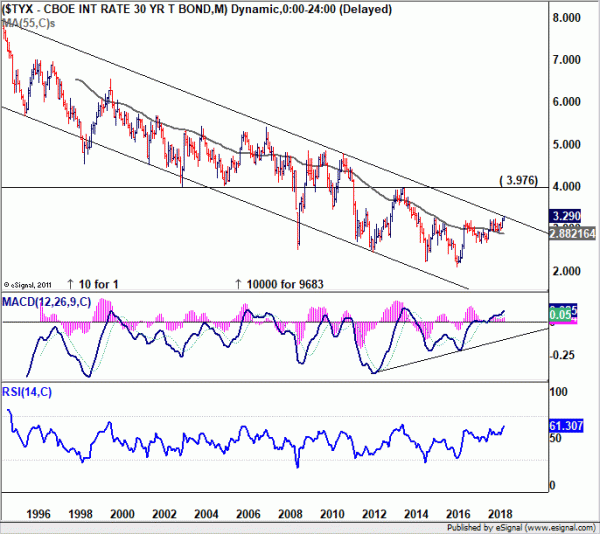
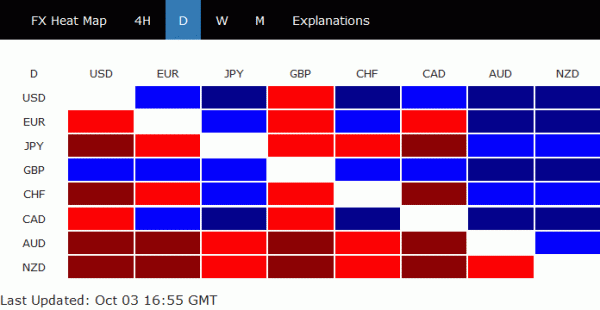
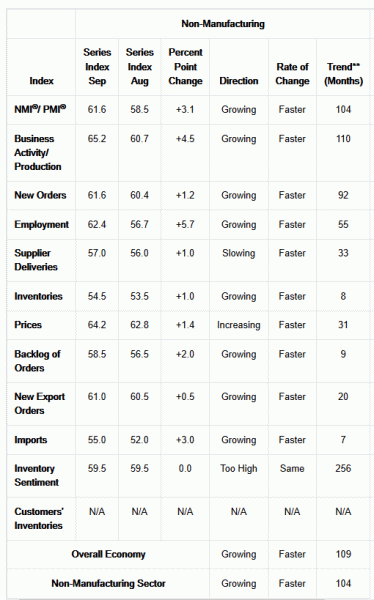
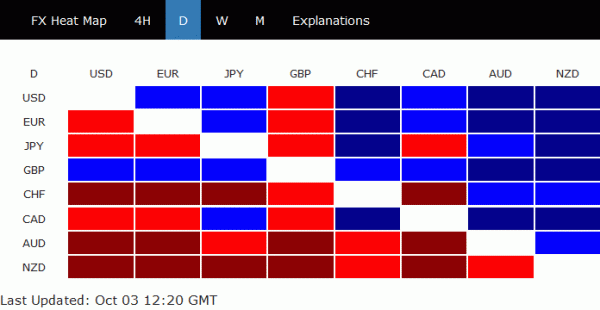
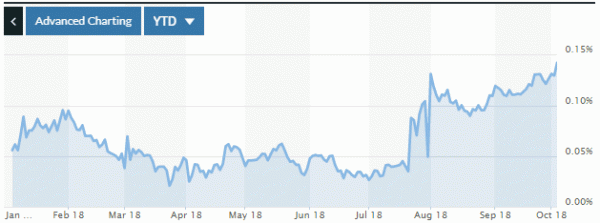
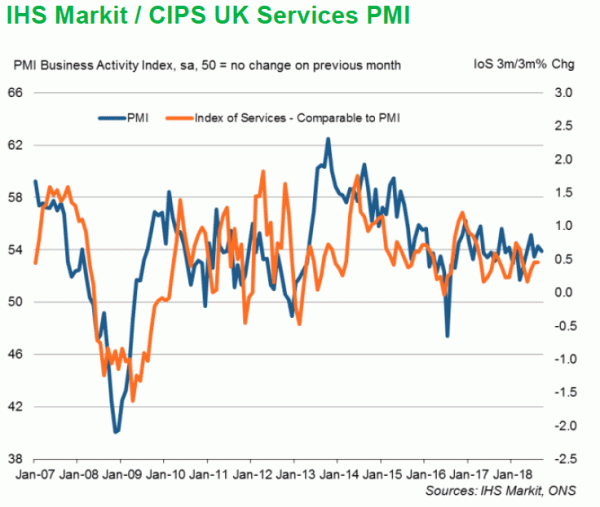
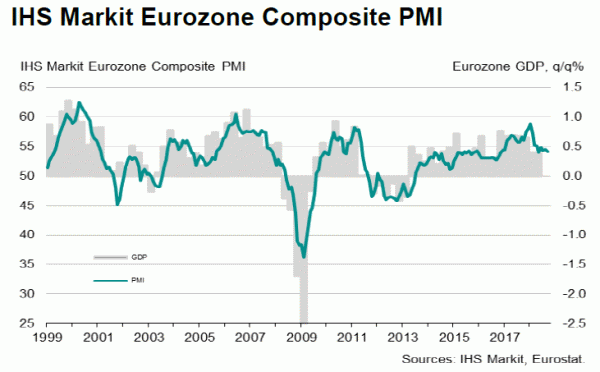
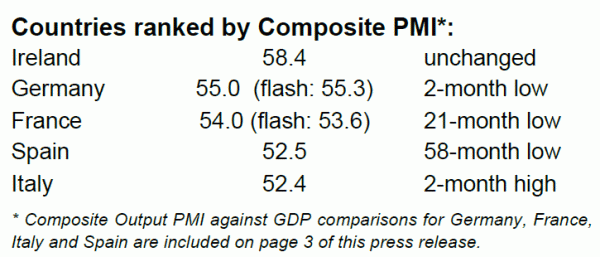

Tusk: EU offered UK a Canada plus plus plus deal
European Council President Donald Tusk reiterated today that the EU wants a post-Brexit relationship with UK that is “as close and special as possible”. And he added “From the very beginning, the EU offer has been not just a Canada deal, but a Canada plus plus plus deal. Much further-reaching on trade, on internal security and on foreign policy cooperation.”
But at the same time he also dismissed UK rejection of EU’s proposal of keeping Northern Ireland inside EU economic rules. Tusk said “Emotional arguments that stress the issue of dignity sound attractive but they do not facilitate agreement. Every actor in this process has their dignity and confrontation in this field will not lead to anything good.” And, “No one can expect that because of Brexit, the EU will give up its fundamental values and key interests.”
He urged UK Prime Minister Theresa May to “get down to business” after having concluded the Conservative Party conference.